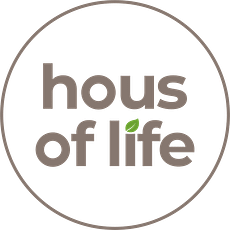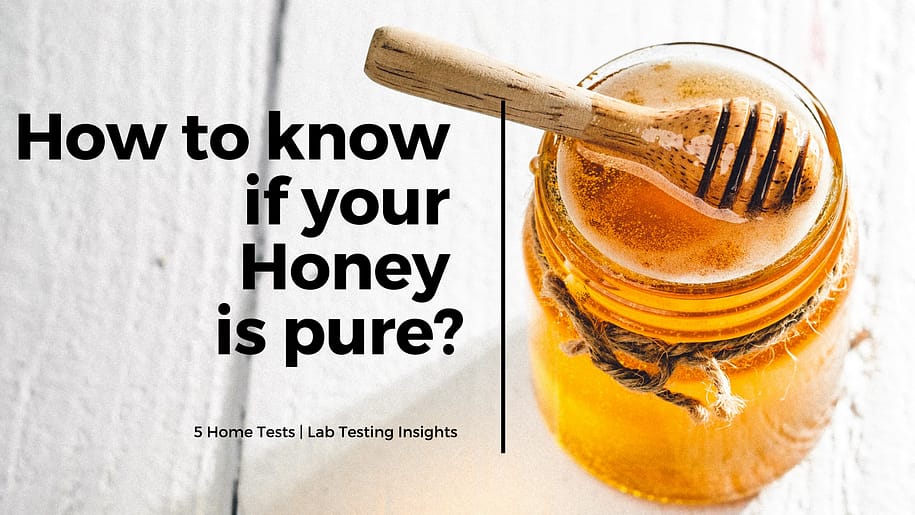How to test the purity of Honey?
Quickly, to test the purity of honey, take a teaspoon of the honey and put it in a glass full of water. Fake (or adulterated) honey will dissolve in the water while pure honey which has a more dense texture will settle right at the bottom of the glass as lumps.
Sounds easy and interesting, right?
Same way as this, there are overall 5 really easy ways to test if your honey is pure. And I have included a personal recommendation after months of hustling on the ‘honey purity’, highlighting it in the ‘conclusion’ of this article.
Without taking much of your time, I would like to quickly explain the 5 best ways to test the purity of Honey are –
- Thumb Test
- Water Test
- Flame Test
- Vinegar Test
- Heat Test
Follow @Housoflife #Honey #health #healthyfoods
——————————————————————————————————————–
How to perform “Thumb test” and check the purity of Honey?
Place a small amount of honey on your thumb and check if spills or spreads around like any other liquid. If it does, it may not be pure. Pure honey is thick while impure honey will be runny.
Pure honey will stick to the surface, without dripping away. Moreover, the taste of impure honey may linger due to the presence of added sugar.
Study on the honey’s purity by taking different tests from the University of Technology Sydney:
University of Technology Sydney’s Dr. Nural Cokcetin, who specializes in microbiology, said the commonly touted belief is that “natural” and “pure” honey crystallized and adulterated does not, but she said that’s not a reliable indicator.
“The crystallisation is influenced by a range of factors, most importantly the proportion of the two main sugars in honey glucose and fructose,” Dr Cokcetin said.
“For example, honeys with a higher glucose level crystallise faster or more readily.
“Of course the way and temperature you store your honey also has an influence on how quickly it crystallizes.
Image reference: A Ted talk event
#Purity #organicfoods #honey
Follow @HousofLife
——————————————————————————————————————–
How to take Water test to check the purity of Honey?
Take a teaspoon of the honey and put it in a glass full of water. Fake or adulterated honey will dissolve in the water while pure honey which has a more dense texture will settle right at the bottom of the glass as lumps. The same is the case with blotting paper or white cloth.
And when you pour pure honey, you will not see it being absorbed or find any stains.
Study on purity of honey by taking different tests by University of the Sunshine Coast
t:
A chemist with extensive knowledge of the chemical composition of honey, said he would not trust results to come out of DIY tests found on the internet.
“We see a lot of honeys coming through our lab … they can be anything from thin, depending on the species of tree it comes from, or it can be very thick,” Dr Brooks said.
——————————————————————————————————————–
How to take a Flame test to check the purity of Honey?
- Step 1 – Dip a cotton wick into the honey and let any excess drip off. Light a match or candle and hold the soaked end of the wick in the flame. If the cotton wick burns, this is a sign that the honey is pure. And if it does not burn, this typically signifies that the honey contains water, which will prevent burning. If the honey contains just a small amount of water, it may still burn but you will hear a crackling sound.
- Step 2 – Stir a tablespoon of honey in a glass of water. If the honey is pure, it will not dissolve. Instead, it will simply sink to the bottom of the glass as a solid lump. If it is impure, it will dissolve into the water. A variation on this method involves stirring half a glass of honey into half a glass of methylated spirit. Pure honey will simply settle at the bottom without dissolving. Impure honey will dissolve, turning the methylated spirit milky.
- Step 3 – Pour some of the honey onto blotting paper. If it is pure, it will not be absorbed into the paper. Alternatively, if you don’t have any blotting paper, pour a bit of honey on a piece of white cloth and then wash it. If the honey is pure, it will not leave a stain on the cloth.
- Step 4 – Pour the honey very slowly. If the honey is pure honey, it will spin in a clockwise direction as it flows out of the jar or bottle. This is caused by the non-symmetrical structure of the honey’s molecules, which have a right-hand bias that makes the stream of honey spin clockwise.
——————————————————————————————————————
How to do a Vinegar test to check the purity of Honey?
This test is simple and you can perform it easily at your home.
By just using three ingredients i.e
- Water
- Vinegar essence
- Honey
Execution:
Mix a tablespoon of honey, 2-3 drops of vinegar essence and water together
If the mixture foams up,
Do you know that there are high chances of adulteration in your honey?
How to do a Heat test to check the purity of Honey?
If you heat pure honey, it will caramelise quickly and not become foamy. But, in case of impure honey it may not caramelise and become bubbly on heating.
You can also identify a lot of the differences between pure and adulterated honey with the naked eye. By simply examining its physical properties.
Pure honey is dense and trickles only into a stream. It has a soft texture, will never separate into layers and offers a distinct sweet aroma.
Raw honey, which is honey in its purest form, often leaves a slight tingling feeling or a mild burning sensation in your throat when consumed.
CONCLUSION
What does a study of Nuclear Magnetic Resonance state about Honey’s purity test?
400 MHz nuclear magnetic resonance (NMR) spectroscopy and multivariate data analysis techniques were used in the context of food surveillance to measure 328 honey samples with 1H and 13C NMR.
Using principal component analysis (PCA), clusters of honeys from the same botanical origin were observed. The chemical shifts of the principal monosaccharides (glucose and fructose) were found to be mostly responsible for this differentiation.
Furthermore, soft independent modeling of class analogy (SIMCA) and partial least squares discriminant analysis (PLS-DA) could be used to automatically classify spectra according to their botanical origin with 95–100% accuracy.
Direct quantification of 13 compounds (carbohydrates, aldehydes, aliphatic and aromatic acids) was additionally possible using external calibration curves and applying TSP as an internal standard.
Hence, NMR spectroscopy combined with chemometrics is an efficient tool for simultaneous identification of botanical origin and quantification of selected constituents of honey.
These days we find it so complex and risky to get the much deserved pure and genuine food for our family that we are almost mandating ourselves to go with the flow.
But not any more.
At Hous of Life, we are committed with a mission to help the global communities simply find and procure the most authentic food for their daily kitchen so that their family is not weakening their health and beliefs about the food and nutrition specialists.
Whether it is healthy therapeutic teas, or traditionally made vedic A2 ghee, or sweeteners, at Hous of Life you get the best of the products which grow and process with love and authenticity.




